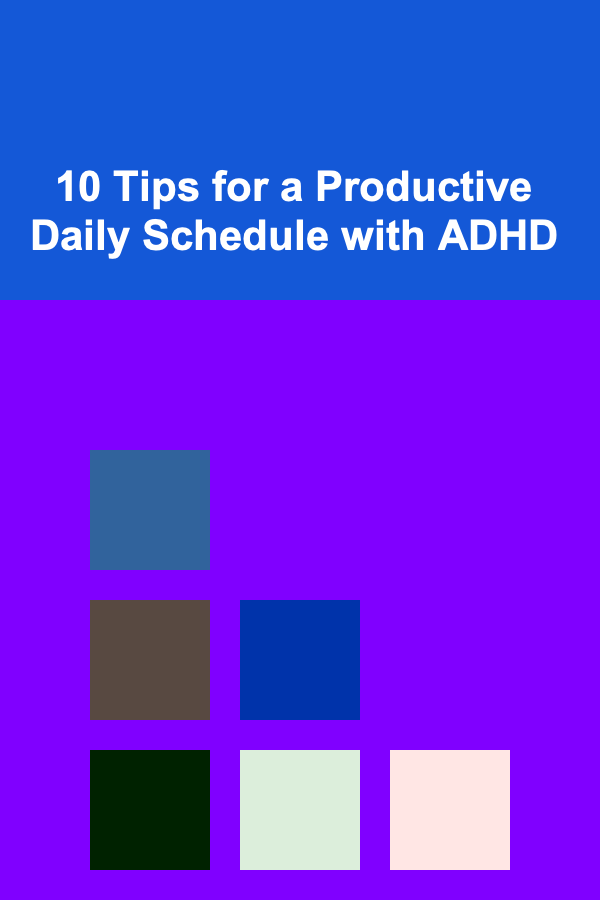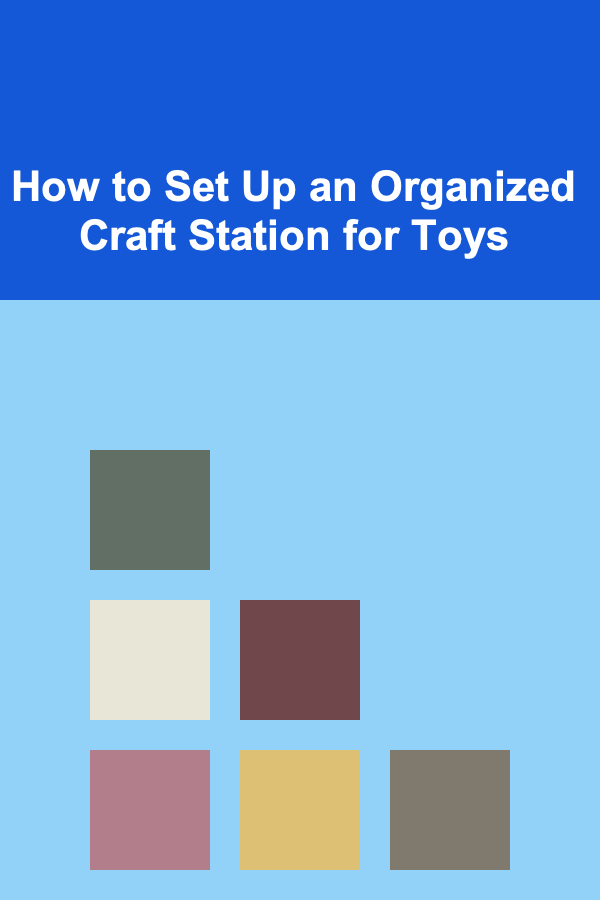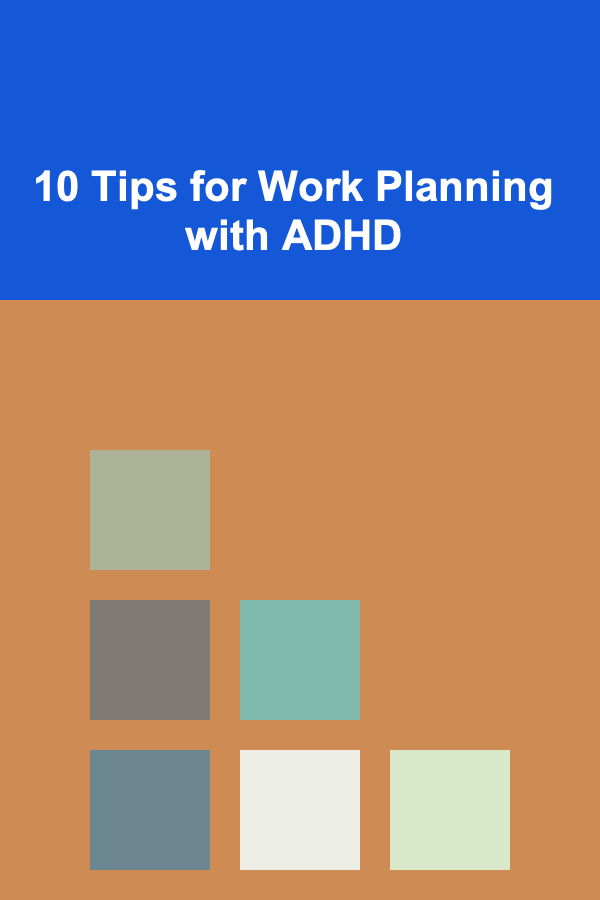
10 Tips for a Productive Daily Schedule with ADHD
ebook include PDF & Audio bundle (Micro Guide)
$12.99$9.99
Limited Time Offer! Order within the next:

Living with Attention Deficit Hyperactivity Disorder (ADHD) can pose unique challenges when it comes to managing time and staying organized. One of the most common difficulties is maintaining a productive daily schedule. The tendency to become easily distracted, forget tasks, and feel overwhelmed by long lists can make it hard to follow through on goals or routines.
However, with the right strategies in place, it is entirely possible to create a daily schedule that fosters productivity and minimizes stress. In this article, we will explore ten practical tips for building a daily schedule that works with ADHD rather than against it. These tips are designed to help you stay on track, prioritize effectively, and create a sense of accomplishment at the end of each day.
Break Tasks into Smaller, Manageable Pieces
One of the hallmark symptoms of ADHD is a tendency to feel overwhelmed by large or complex tasks. When faced with an extensive to-do list or a complicated project, it's easy to become paralyzed or distracted. The solution is to break tasks into smaller, more manageable steps.
Why This Works
Smaller tasks are less daunting and feel more achievable, which reduces the likelihood of procrastination. When a task is broken down into bite-sized chunks, it's easier to focus on one piece at a time and experience a sense of progress.
How to Implement This
Start by listing out every step required to complete a task. For instance, if you need to write a report, break it down into:
- Research the topic
- Create an outline
- Write the introduction
- Write each section of the report
- Edit and revise
- Finalize formatting and submission
Each of these sub-tasks can be tackled one by one, making the process feel more manageable.
Use Time Blocks to Structure Your Day
ADHD often comes with a sense of time blindness, making it difficult to gauge how long a task will take or how much time has passed. To counter this, try using time blocks to structure your day.
Why This Works
Time blocking helps you focus on one task at a time while also limiting the amount of time you spend on each activity. This can improve concentration, as you know exactly when to start and stop each task. It can also prevent you from getting lost in a task and losing track of time.
How to Implement This
Set aside specific periods of time for different activities throughout your day. For example:
- 8:00 AM -- 9:30 AM: Work on emails
- 9:30 AM -- 10:00 AM: Break
- 10:00 AM -- 12:00 PM: Project work
- 12:00 PM -- 1:00 PM: Lunch
- 1:00 PM -- 3:00 PM: Meetings
- 3:00 PM -- 4:00 PM: Administrative tasks
Using a timer or an alarm can help you stick to the time blocks and keep you from overdoing any one task.
Prioritize Tasks with the "MIT" Method
With ADHD, it's easy to get distracted by low-priority tasks that seem easier or more enjoyable. However, the key to a productive schedule is prioritizing your most important tasks.
Why This Works
The "Most Important Task" (MIT) method helps you focus on the tasks that matter most, reducing the likelihood that you will spend your energy on trivial tasks. By identifying the MITs at the start of your day, you ensure that your most critical work gets done.
How to Implement This
At the start of each day, identify the three most important tasks you need to complete. These should be the tasks that will have the greatest impact on your goals. Write them down and commit to completing them before moving on to other activities.
For example, your MITs for the day could be:
- Submit a report
- Attend a team meeting
- Answer client emails
By giving your most important tasks priority, you set yourself up for success.
Create Visual Reminders
People with ADHD often struggle with memory and forget to complete tasks or appointments. A visual reminder system can help you stay on top of your daily schedule.
Why This Works
Visual reminders make it easier to see what needs to be done, reducing the cognitive load of remembering tasks. When you have a visual cue, you're more likely to stay on track.
How to Implement This
Use tools like sticky notes, color-coded calendars, or apps with notifications to create visual reminders of your tasks and deadlines. You could also set up a physical to-do list in your workspace, where you can easily see what's next.
For example:
- Use a whiteboard or corkboard to list your tasks.
- Use different colors for different types of tasks (work, personal, urgent).
- Set up reminders on your phone or computer to alert you when it's time to start or finish a task.
Incorporate Frequent Breaks into Your Schedule
ADHD often leads to difficulties with maintaining focus for extended periods of time. Incorporating regular breaks into your daily schedule can improve productivity by giving your brain time to reset and refocus.
Why This Works
Frequent breaks help prevent mental fatigue and burnout. Studies show that the brain can only focus intensely for about 25-45 minutes at a time. After that, attention starts to wane, and productivity decreases. Taking breaks allows your mind to refresh, making it easier to stay engaged with the task at hand.
How to Implement This
Use the Pomodoro Technique, which involves working in 25-minute intervals followed by a 5-minute break. After four intervals, take a longer break (15-30 minutes). During your breaks, step away from your workspace and do something physical or relaxing, like taking a walk, stretching, or grabbing a snack.
Establish a Morning Routine
A consistent morning routine can help set the tone for the rest of the day. For those with ADHD, a morning routine provides structure, which can help reduce anxiety and the feeling of being overwhelmed.
Why This Works
Routines create predictability, which helps you transition from one task to the next with less mental effort. A solid morning routine can also help you start the day with a sense of accomplishment, boosting motivation for the tasks ahead.
How to Implement This
Create a morning routine that is simple and sustainable. Start with essential tasks that set you up for success, such as:
- Wake up at the same time each day
- Eat a healthy breakfast
- Review your schedule for the day
- Meditate or do a quick exercise session
By sticking to a routine, you can avoid rushing and start the day with clarity and purpose.
Minimize Distractions
Distractions are a major challenge for individuals with ADHD. To stay productive, you must actively minimize distractions in your environment.
Why This Works
The more distractions you face, the harder it becomes to focus. Reducing distractions makes it easier to stay on task and complete your work efficiently.
How to Implement This
- Create a distraction-free workspace: Set up a designated area for work that is free from distractions (e.g., turn off the TV, silence unnecessary notifications, clear clutter from your desk).
- Use website blockers: If you find yourself getting sidetracked by social media or other websites, use website blockers like "StayFocusd" or "Cold Turkey" to prevent access during work hours.
- Use noise-canceling headphones: If you're easily distracted by background noise, invest in noise-canceling headphones to help you concentrate.
Set Up a Reward System
Creating a reward system can help keep you motivated throughout the day, especially when faced with tasks that feel tedious or uninteresting.
Why This Works
Incentives can help make difficult tasks more appealing. The anticipation of a reward creates positive reinforcement, making you more likely to follow through on tasks.
How to Implement This
Set up a system where you reward yourself for completing tasks. For example:
- After finishing a work task, you can reward yourself with a coffee break.
- After completing your MITs for the day, treat yourself to something enjoyable, like watching an episode of your favorite show or going for a walk.
The key is to keep the rewards simple and attainable, ensuring they provide enough motivation to push through difficult tasks.
Use Technology to Stay Organized
There are many tools and apps designed to help individuals with ADHD stay organized and on track. These tools can be particularly helpful for managing time and staying focused.
Why This Works
Apps and technology provide structure and reminders, which can be incredibly useful for people with ADHD. They help you stay organized, set goals, and track progress.
How to Implement This
Use productivity apps like:
- Trello: For organizing tasks into boards and lists.
- Todoist: To create task lists and set deadlines.
- Forest: A focus timer app that helps you stay off your phone.
- Google Calendar: For scheduling your day and setting reminders.
Experiment with different apps until you find the ones that best suit your needs.
Practice Self-Compassion
Living with ADHD can sometimes feel like a constant battle against your own brain. You may have days when things don't go as planned, and you struggle to stay productive. It's important to practice self-compassion and recognize that everyone has bad days.
Why This Works
Self-compassion helps you avoid harsh self-criticism, which can lead to feelings of guilt, frustration, and burnout. When you're kind to yourself, you're more likely to bounce back from setbacks and stay motivated to try again.
How to Implement This
- Be kind to yourself when things don't go as planned.
- Recognize that ADHD is a part of who you are, but it doesn't define your worth.
- Take breaks when needed and allow yourself time to recharge.
By practicing self-compassion, you'll reduce stress and improve your ability to maintain a positive outlook on your productivity.
Conclusion
Managing a productive daily schedule with ADHD is challenging, but by using the right strategies, you can build a routine that works for you. By breaking tasks into smaller pieces, prioritizing effectively, and incorporating structure and breaks into your day, you can enhance your focus, reduce distractions, and set yourself up for success. Remember, the key is consistency, patience, and self-compassion. With time and effort, you can create a productive daily schedule that helps you thrive, despite the challenges ADHD may present.
Reading More From Our Other Websites
- [Biking 101] The Ultimate Guide to Electric Bikes: Everything You Need to Know
- [Home Holiday Decoration 101] How to Make Your New Year's Eve Party Shine with Elegant Decorations
- [Personal Care Tips 101] How to Use Antiperspirant Without Clogging Pores
- [Personal Care Tips 101] How to Set Healthy Boundaries with Family Members
- [Organization Tip 101] How to Adapt Your Leadership Style for Remote Teams
- [Personal Care Tips 101] How to Incorporate Anti-Aging Personal Care Tips into Your Daily Routine: A Beginner's Guide
- [Skydiving Tip 101] From the Swiss Alps to the Sahara: How Different Countries Shape the Skydiving Experience
- [Home Maintenance 101] How to Clean and Maintain Your Home's Washer and Dryer
- [Horseback Riding Tip 101] Balancing Act: Core Strength Exercises to Enhance Your Riding Position
- [Home Space Saving 101] How to Optimize Your Hobby Zone with Smart Craft Room Organization Techniques

How to Manage Transportation Logistics for Field Trips
Read More
How to Set Up an Organized Craft Station for Toys
Read More
How to Update Your Bathroom Decor on a Budget
Read MoreHow To Design Custom Icons for Websites
Read More
Event Coordinator's Toolkit: Essential Apps & Software
Read More
10 Tips for Work Planning with ADHD
Read MoreOther Products

How to Manage Transportation Logistics for Field Trips
Read More
How to Set Up an Organized Craft Station for Toys
Read More
How to Update Your Bathroom Decor on a Budget
Read MoreHow To Design Custom Icons for Websites
Read More
Event Coordinator's Toolkit: Essential Apps & Software
Read More